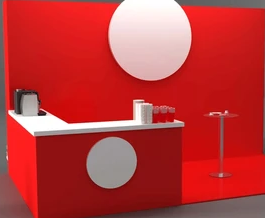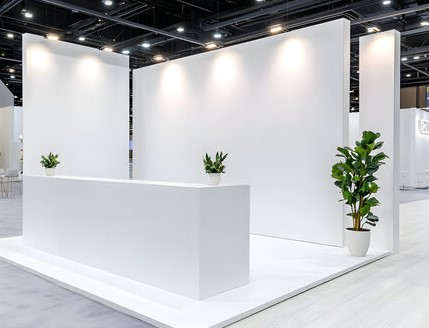Trade shows offer an unparalleled opportunity for businesses to showcase their products or services, connect with potential clients, and strengthen brand visibility in a competitive market. However, to make the most of these events, it’s essential to have a well-designed, engaging, and functional booth that draws in attendees and delivers your message effectively. Whether you’re participating in your first trade show or you’re a seasoned exhibitor, understanding how to build the ideal trade show booth from concept to execution is crucial for success.
This guide will walk you through the process, offering detailed insights on everything from initial planning to the final setup. Here’s how you can create a booth that captivates and converts:
Step 1: Define Your Objectives
Before designing or building your trade show booth, it’s essential to understand what you aim to achieve. Setting clear objectives will guide every decision you make during the planning and execution process. Your goals may include:
- Brand awareness: Introducing your company and its products to a broader audience.
- Lead generation: Gathering contact information from prospects and converting them into customers.
- Networking: Connecting with potential business partners or influencers within your industry.
- Product launch or demonstration: Showcasing a new product or service to attract attention and generate buzz.
Once you’ve defined your objectives, tailor your booth design to reflect these goals. A booth focused on generating leads might emphasize easy sign-up opportunities and sales pitches, while one focused on brand awareness might prioritize an eye-catching, visually appealing design.
Step 2: Know Your Audience
Understanding your audience is a critical aspect of booth design. Your booth should appeal to the interests and needs of the people you want to attract. Different events draw different types of attendees, so conduct research on the trade show’s demographic and the industry it caters to.
- Attendee profile: Are they business decision-makers, industry professionals, or potential customers?
- Industry-specific trends: What features or services in your field are most likely to grab attention?
- Event size and location: How much foot traffic do you anticipate? What kind of exhibitors are participating?
By tailoring your booth’s design, messaging, and offerings to the preferences of the attendees, you increase the chances of making meaningful connections.
Step 3: Create a Unique and Memorable Design
When attendees walk through a trade show floor, they encounter dozens, sometimes hundreds, of booths. To stand out, your booth needs to be visually striking, unique, and aligned with your brand’s identity. Here are some key design elements to consider:
Brand Identity
Make sure that the overall look of the booth reflects your brand. Use your brand’s color scheme, logo, and fonts consistently across all design elements. Your booth should feel like an extension of your website, brochures, and other marketing materials.
Layout
The layout should be open and welcoming. Avoid cramped spaces that discourage people from entering. Consider the following booth layout tips:
- Open design: Create an inviting atmosphere where visitors feel comfortable coming inside.
- Space for interaction: Include areas where attendees can engage with your products or services, whether through demonstrations, video displays, or hands-on activities.
- Flow: Make sure the booth design guides visitors’ attention to key areas, such as product displays or promotional materials.
Graphics and Visuals
Large, bold graphics work well at trade shows because they catch the attention of passing visitors. High-quality images, banners, and video screens can make a powerful impact. Ensure the visuals communicate your message clearly and are easy to read from a distance. Here are some considerations:
- Concise messaging: Keep text short and impactful. Trade show visitors often have limited time, so your message should be clear at a glance.
- Interactive displays: Incorporating screens that play videos or animations can engage attendees and provide more information about your products.
Lighting
Effective lighting can enhance the overall ambiance and highlight key elements of your booth. Consider using adjustable LED lights to emphasize specific products or areas of your booth. Well-placed lighting can also help create a warm, inviting atmosphere.
Product Display
The way you display your products is integral to your booth’s success. Displaying products at different heights and in well-organized arrangements will attract visitors and encourage them to interact with the items. Depending on your industry, you may want to include sample products, demonstrations, or hands-on experiences.
Step 4: Incorporate Technology and Interactivity
In today’s digital age, technology is a must-have for most trade show booths. Incorporating interactive technology not only attracts visitors but also allows for deeper engagement and product exploration.
- Virtual reality (VR) or augmented reality (AR): These technologies can create immersive experiences that give visitors a closer look at your products or services.
- Touchscreen kiosks: These can provide visitors with more information about your products, services, or company, and allow for direct interaction.
- Social media integration: Promote your booth on social media platforms with live updates, giveaways, or interactive games that encourage attendees to share their experiences online.
- Lead capture systems: Consider using a digital system to capture attendee information quickly, such as QR codes or tablet-based registration systems.
Step 5: Build a Strong Team
Your booth’s success isn’t just about the design—it’s also about how well your team engages with attendees. A knowledgeable, friendly, and approachable staff is essential for drawing visitors in and providing them with the information they need. Here’s how to prepare your team:
- Training: Ensure that all staff members are well-versed in your products and services. They should be able to answer questions and provide demonstrations confidently.
- Brand ambassadors: Choose team members who are not only knowledgeable but also outgoing and approachable. A friendly face can make all the difference in attracting attendees.
- Role allocation: Assign roles to different team members, such as one person for product demonstrations, another for answering questions, and another for managing lead capture. This ensures efficiency.
Step 6: Plan for Logistics and Setup
After the design and team planning, it’s time to tackle the logistical aspects of your booth. This includes deciding on booth size, transportation, installation, and staffing needs.
- Booth size and layout: Your trade show organizers will provide you with specific dimensions for your booth space. Make sure the booth design fits within those limits while maximizing available space.
- Booth construction: If you’re using a custom-built booth, work with an experienced contractor who can bring your design to life. If you’re renting a booth, ensure it meets your requirements.
- Shipping and setup: Plan ahead for shipping your booth materials to and from the trade show location. Arrive early to allow plenty of time for setup. Confirm all electrical and technical needs (like internet access or lighting) with the venue in advance.
Step 7: Create Engaging Marketing Materials
Your booth should include marketing materials that clearly explain your products and services. These can include brochures, flyers, business cards, product catalogs, and promotional giveaways. Here are some tips for creating effective materials:
- Clear and concise: Make sure your materials are easy to read and clearly communicate your value proposition.
- Call to action: Include a strong call to action on all materials, such as signing up for a demo or visiting your website for more information.
- Promotional giveaways: Consider offering branded giveaways like pens, notepads, or tote bags. These items are great for creating a lasting impression.
Step 8: Follow-Up After the Event
The work doesn’t stop once the trade show ends. Following up with leads and prospects is crucial to converting interest into tangible business outcomes.
- Organize and prioritize leads: After collecting attendee information, organize the leads based on priority (e.g., hot leads vs. cold leads).
- Personalized follow-up: Send a personalized follow-up email thanking prospects for visiting your booth and offering additional resources or a demo. Make sure to address their specific needs or interests discussed during the event.
- Measure success: Assess the effectiveness of your booth by measuring against your initial objectives. Did you generate enough leads? Were your products well-received? What feedback did you receive from attendees?
Building the ideal trade show booth requires meticulous planning, creativity, and attention to detail. From defining your objectives to executing your design, each step plays an integral role in making your booth a success. By understanding your audience, creating a compelling design, utilizing technology, and building a strong team, you can create an immersive and engaging experience that maximizes your trade show investment.
Remember, a great trade show booth is not just about making an immediate sale but about fostering lasting relationships and elevating your brand’s presence in the industry. By putting in the effort to perfect each element of the booth, you can ensure a successful and rewarding trade show experience.




